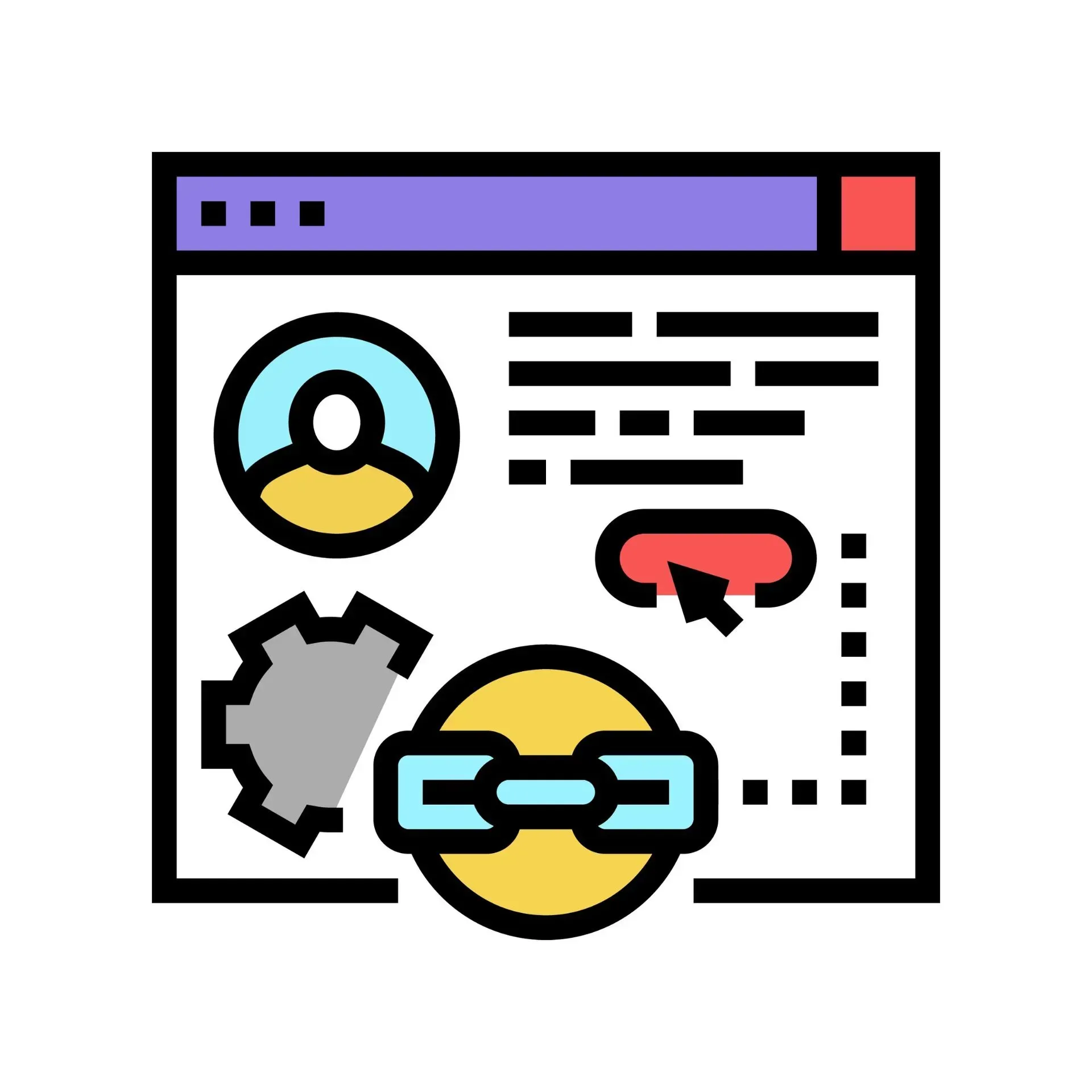Why Your Business Needs Professional Website Designing?
In today's digital world, having a professional website isn't just an option, it's a necessity. Your website is the first place many potential customers will go to learn about your business.
A well-designed site helps you stand out from the competition and builds trust with your audience. It shows that you are serious and professional.
Plus, a good website makes it easy for people to find the information they need and contact you. If your site is outdated or tough to navigate, you might be losing customers without even knowing it.
The Impact of Professional Website Design
Improved User Experience
A professional website design significantly enhances the user experience. When visitors land on your site, they expect a seamless, intuitive navigation that allows them to find information quickly.
A well-structured site, coupled with fast loading times, ensures that users stay longer and are more likely to convert into customers.
Increased Traffic and Engagement
- SEO Optimization: Incorporating trending keywords such as "SEO best practices" can help your website rank higher on search engines, drawing in more organic traffic.
- Mobile Responsiveness: With a growing number of users accessing the web via mobile devices, having a mobile-friendly design is crucial. "Responsive design" is a keyword that matches current trends ensuring your site looks great on all devices.
- Quality Content: Engaging, informative content that incorporates keywords like "high-quality content" and "customer engagement" keeps visitors coming back for more.
Enhanced Brand Image
A professionally designed website reflects your brand's identity and values. It speaks volumes about your business's credibility and professionalism. Here are some aspects to consider:
- Visual Aesthetics: Use color schemes, fonts, and graphics that align with your brand's message. Keywords such as "branding consistency" and "visual appeal" are crucial in this context.
- Trust and Credibility: A sleek, modern website builds trust with your audience. Incorporating customer testimonials, badges, and certifications can improve your reputation. Look for keywords like "customer trust" and "business credibility."
Better Conversion Rates
A well-designed website can improve conversion rates by guiding visitors smoothly through the sales funnel. Here’s how:
- Clear Call-to-Actions (CTAs): Strategically placed CTAs that gently guide users towards taking action, whether it's making a purchase, signing up for a newsletter, or contacting your business.
- Easy Navigation: Simple, logical navigation paths make it easy for users to find what they need, reducing bounce rates and increasing the likelihood of a conversion.
By focusing on these elements, you can ensure your website is not only aesthetically pleasing but also functionally superior, driving both traffic and revenue growth.
Benefits of Professional Website Design for Small Businesses
A professional website design is essential for small businesses aiming to make a lasting impression in today’s digital world. By working with a skilled Phoenix web design company, businesses can ensure their website is both visually appealing and easy to navigate, providing a seamless user experience. Coupled with the expertise of a digital marketing agency Phoenix AZ, your website can be optimized for search engines, increasing visibility and attracting more customers. A well-designed website is not only a marketing tool but a crucial asset for long-term success and growth.
Establishing Online Presence
In an era where everyone is online, having a professional website enhances your business's digital footprint. It allows your small business to be discovered by a global audience, providing an opportunity to attract customers beyond your local area.
Boosting Credibility and Trust
- First Impressions Matter: Your website is often the first interaction potential customers have with your business. A polished, professional design helps to make a positive initial impression.
- Certification and Reviews: Showcase customer testimonials, certifications, and awards to build credibility and trust. This includes integrating keywords like "customer testimonials" and "trusted reviews" to enhance SEO.
Enhancing Customer Engagement
A well-designed website encourages visitor interaction, keeping users engaged and encouraging them to explore further. Features such as:
- Blog Section: Regularly updated blogs offering industry tips, how-tos, and insights. Use keywords such as "industry insights" and "expert tips" to draw in readers.
- Interactive Elements: Incorporate features like live chat, forums, and interactive quizzes to engage your audience. Ensure your content strategy includes trending keywords for better visibility.
Driving Sales and Conversions
A professionally designed website can significantly impact your sales by converting visitors into customers.
- Strategic CTAs: Place clear and compelling calls-to-action at strategic points, guiding users towards making a purchase or inquiry.
- Product Showcases: Highlight your products or services with high-quality images and detailed descriptions. Keywords like "product showcase" and "purchase guide" aid in optimizing content for search engines.
Optimizing for Search Engines
Search Engine Optimization (SEO) is crucial for driving organic traffic to your website.
- Keyword Integration: Seamlessly integrate trending keywords such as "SEO strategies," "on-page SEO," and "keyword optimization" throughout your content.
- Meta Tags and Descriptions: Use relevant keywords in your meta tags and descriptions to improve search engine rankings and click-through rates.
Providing Excellent User Experience
The user experience can make or break your website's success.
- Fast Loading Speeds: Ensure your site loads quickly to reduce bounce rates and improve user satisfaction.
- Responsive Design: A mobile-friendly design ensures your site looks and functions well on all devices, which is now a ranking factor for search engines.
By incorporating these elements, your small business can reap the full benefits of a
professional website design. Not only will it enhance your online presence, but it will also drive consumer trust, engagement, and sales.
Key Elements of Professional Website Design
Eye-catching Visuals
Aesthetic appeal plays a crucial role in retaining visitors. Here’s how to ensure your site is visually captivating:
- Color Scheme: Choose a palette that aligns with your brand identity. Keywords like "brand color palette" and "visual consistency" are essential here.
- Typography: Use clear, readable fonts that enhance the user experience. Examples include using "modern typography" and "readable fonts" to keep content fresh and engaging.
- High-quality Images: Utilize professional images and graphics to create a visually appealing layout. Incorporate keywords like "high-resolution images" and "website graphics" to cater to search engines.
Easy Navigation
Making your website easy to navigate is essential for a positive user experience.
- Clear Menus: Ensure your navigation menus are labeled clearly and logically. "Intuitive navigation" and "user-friendly menu" are keywords that improve SEO.
- Internal Linking: Use internal links to guide users to relevant sections of your website, keeping them engaged longer.
Optimizing Load Speed
Quick load times are critical for keeping visitors on your site. Slow speeds can drive them away.
- Compress Images: Optimize images to ensure they don’t slow down your website.
- Minimize Plugins: Reduce the number of plugins to improve performance.
Content Strategy
Creating valuable and relevant content ensures visitors return.
- Blog Posts: Regularly update with articles that include industry insights and expert tips. Keywords such as "industry updates" and "valuable content" will help with SEO.
- Multimedia Content: Integrate videos, infographics, and podcasts to make your content engaging and shareable.
CTA Placement
Strategically placing Calls-to-Action (CTAs) can significantly enhance conversion rates.
- Above the Fold: Place primary CTAs in visible areas such as above the fold on your homepage.
- Actionable Language: Use clear and compelling language to encourage immediate action, incorporating keywords like "effective CTAs" and "conversion rate optimization."
By diversifying these elements, your professional website design can both captivate and convert your audience, boosting your online presence.
DIY vs. Professional Design: Making the Right Choice
When deciding between DIY and professional website design, it's crucial to weigh the pros and cons of each approach in context with your business’s unique needs and goals.
Pros and Cons of DIY Website Design
Pros:
- Cost-Effective: Building your website can save you money, especially important for startups with tight budgets. Relevant keywords: "budget-friendly," "cost-saving."
- Control and Customization: You have full control over every aspect of your site’s design and functionality, allowing for complete customization. Keywords: "customizable design," "total control."
Cons:
- Time-Consuming: Designing and maintaining a website can take significant time, time you could be spending growing your business. Keywords: "time-intensive," "labor-intensive."
- Skill and Expertise: Without technical expertise, achieving a professional look and ensuring functionality can be challenging. Keywords: "technical skills," "expert guidance."
Benefits of Hiring a Professional Designer
High-Quality Design and Functionality
- Unique Design: Professional designers can create a unique website that stands out in a crowded market, reflecting your brand identity accurately. Keywords: "custom design," "unique branding."
- Technical Expertise: They possess technical skills to efficiently handle complex design elements, resulting in a more polished and professional site. Keywords: "technical expertise," "professional finish."
Ready to take your business to the next level?
In today's competitive market, a professional website is a necessity. From creating a strong first impression to improving user experience and boosting conversions, the benefits of professional website design are undeniable.
Small business owners who invest in a well-designed website can expect increased visibility, enhanced brand credibility, and long-term growth.
Invest in professional website design today and experience the transformation for yourself.










